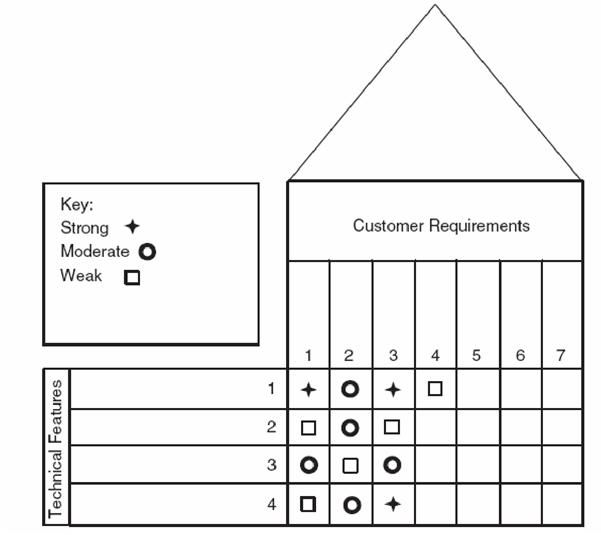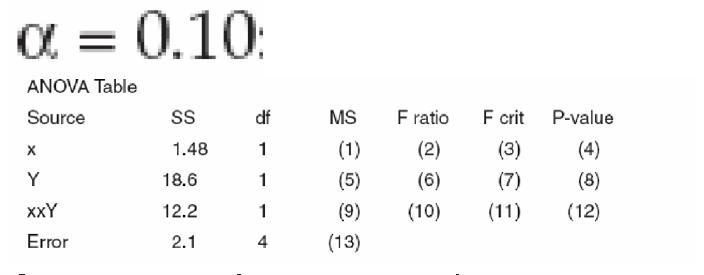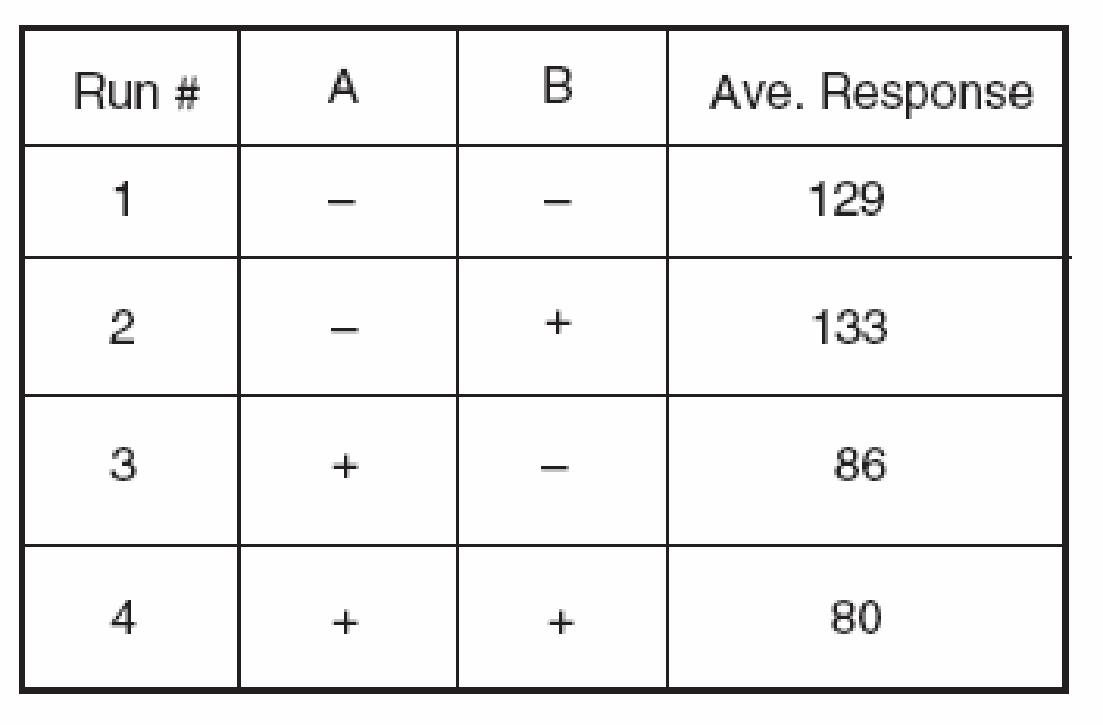GAQM CLSSBB - Certified Lean Six Sigma Black Belt (CLSSBB)
A team wants a technique for improving consistency of assembly operations. They should use:
Customer requirement #3 has a ______________ relationship with technical feature #3.

A ____ from a sample is used to estimate a population _____. The two words that best fill these blanks are:
Find the value of (6) in the ANOVA table. Assume:


This experimental design is an example of:
If the probability that event A occurs is 0.51, the probability that event B occurs is 0.64 and events A and B are statistically independent then:
Customer segmentation refers to:
After a team has engaged in diversion activities they may need to employ a tool for conversion. Examples of such a tool are:
I. nominal group technique
II. Multivoting
III. cause and effect diagram
IV. activity network diagram
V. matrix diagrams
A project that lacks a clear definition of its scope and boundaries runs the risk of:
An engineer wants to try two hardening ovens to see whether they have different hardness scores. She cuts 8 pieces of bar stock in half, putting half of each in oven A and the other half in oven B. The following data are collected:

Do the data indicate that the ovens have different average scores? Assume differences are normally distributed.



